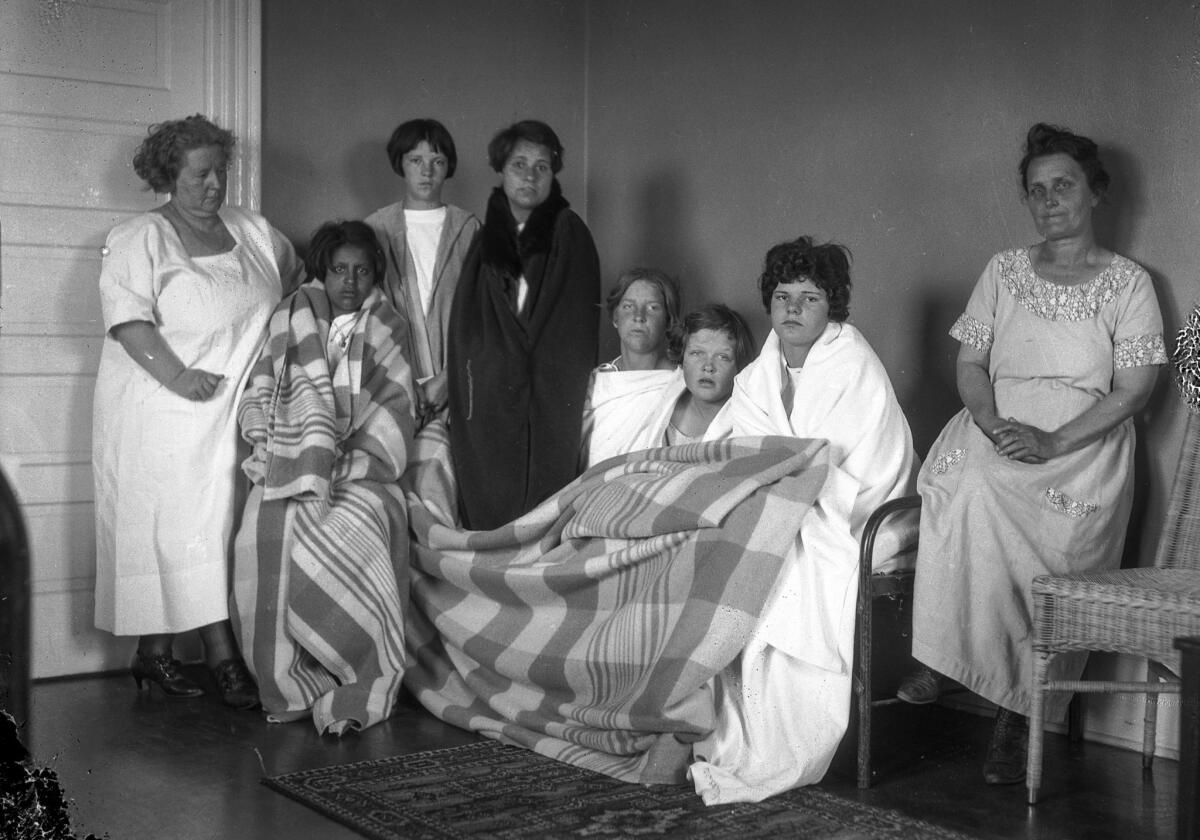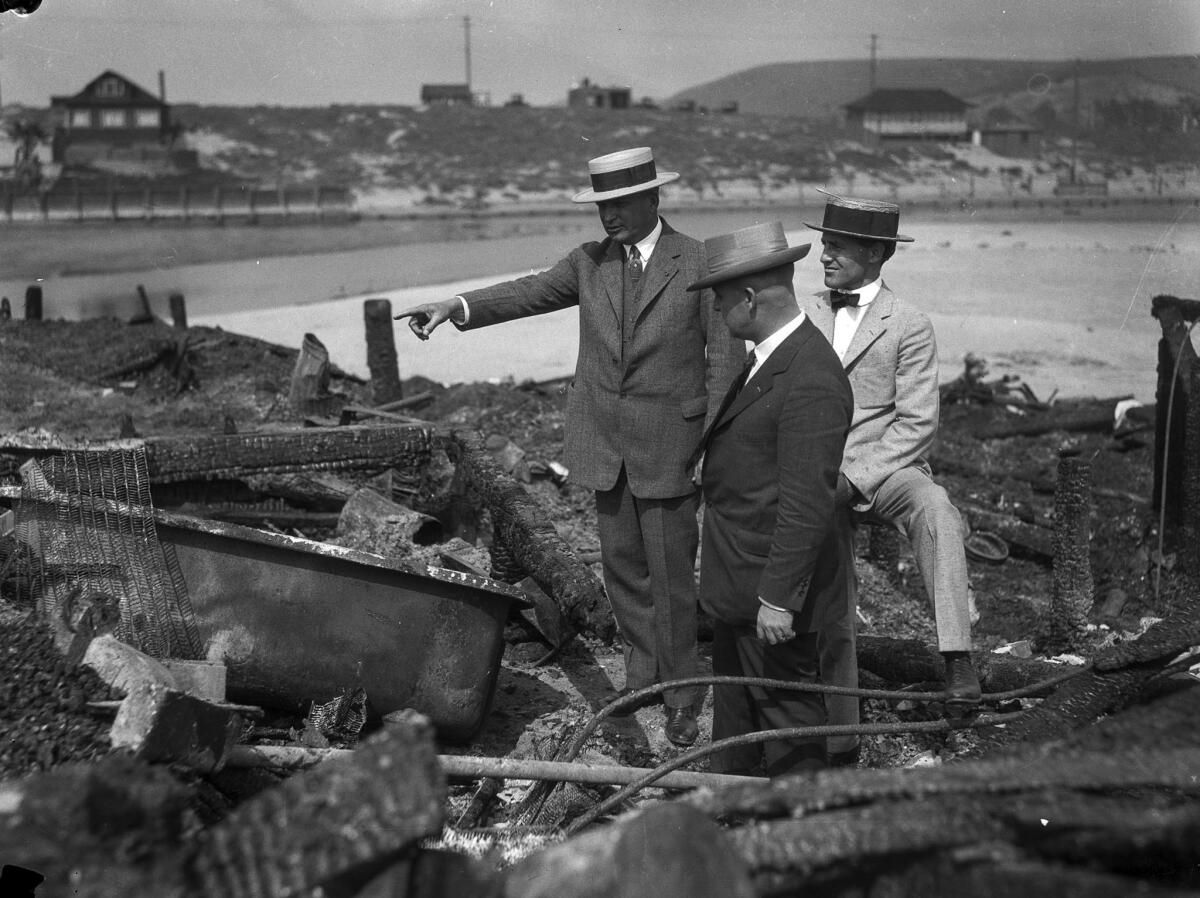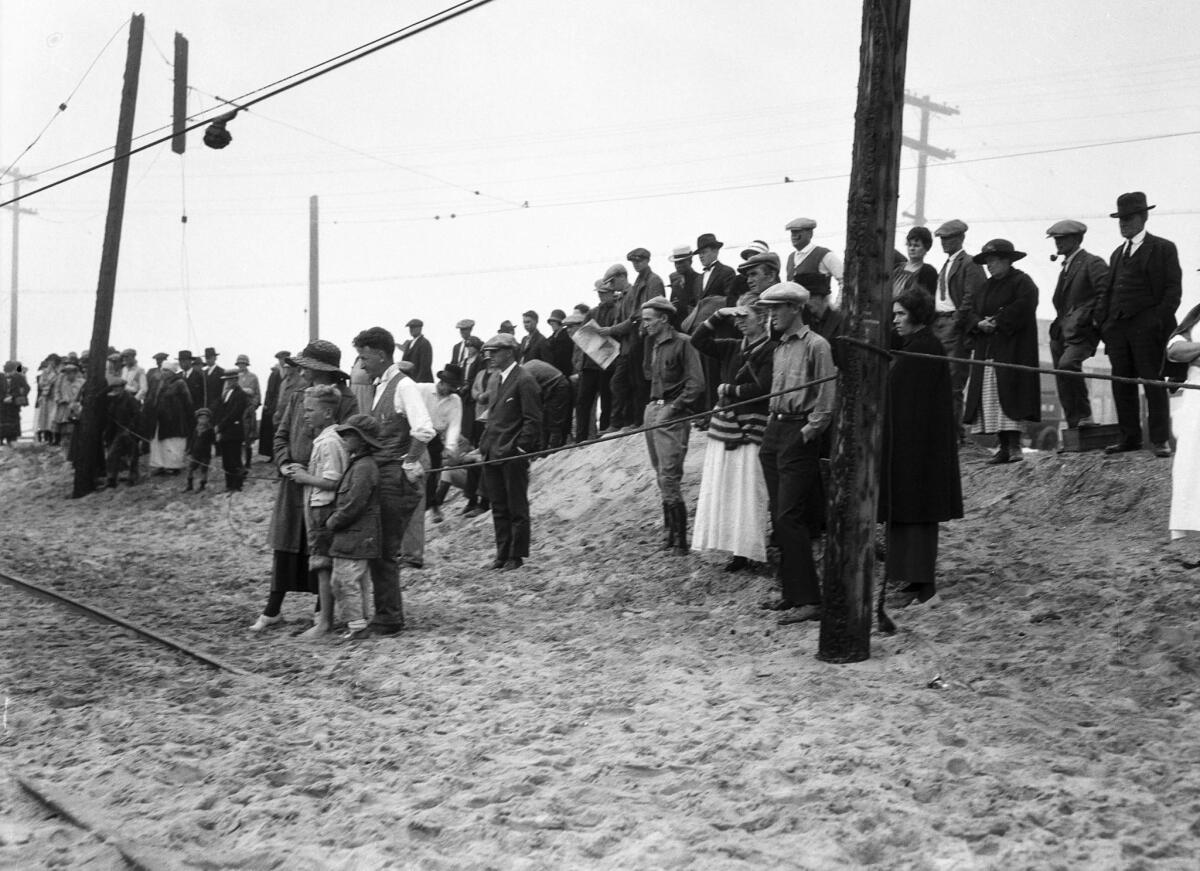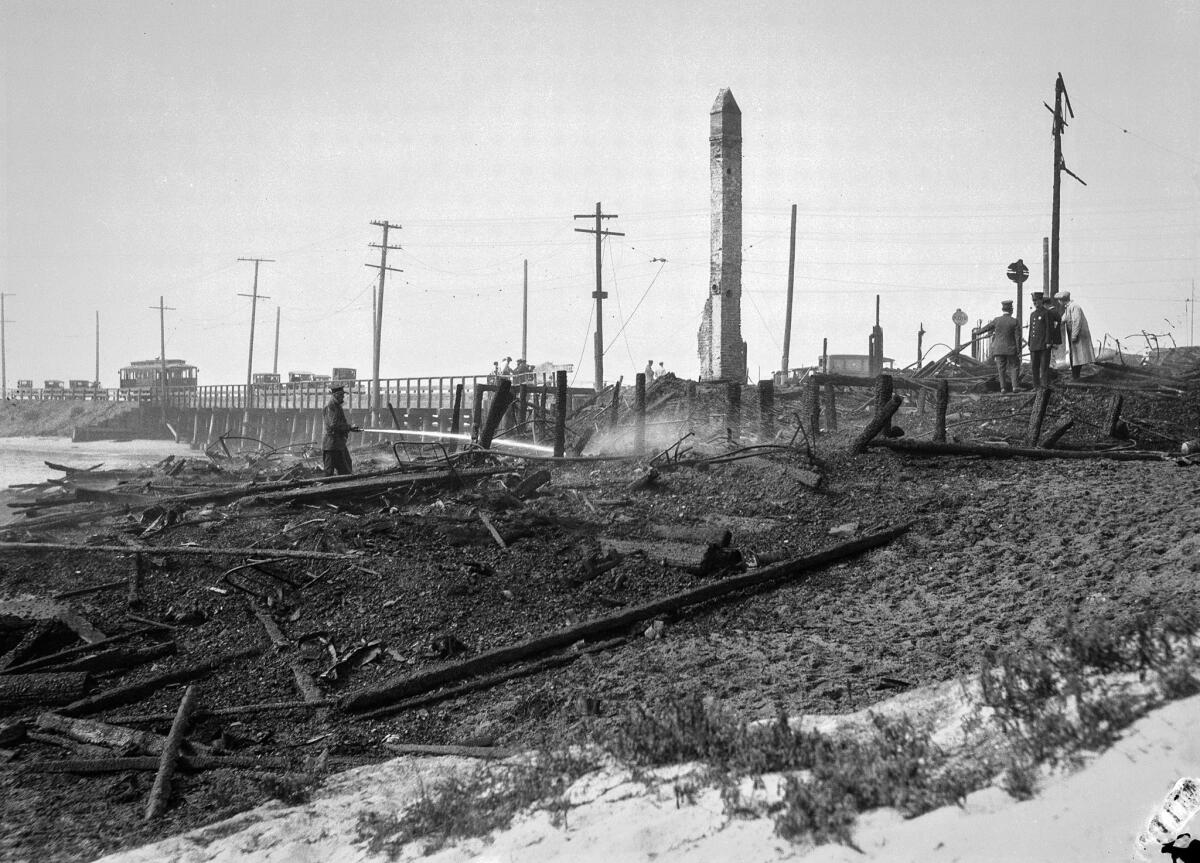From the Archives: Fire kills 24 at Hope Development School
- Share via
In a largely forgotten tragedy, 24 people died in a May 31, 1924, fire at the Hope Development School in Playa del Rey. The victims were mostly mentally disabled girls and young women.
The school's building originally was the Hotel Del Rey, opened in the early 19th century on the banks of the Del Rey Lagoon. The three-story wooden structure had 40 rooms and a large dining room. Hotel guests had access to boating and fishing just outside the hotel's front door.
The hotel later became a center for prostitution and in 1917 was closed. In 1920, the structure became the Hope Development School for mentally disabled girls. The school offered training and other occupational programs.
The Los Angeles County Public Welfare Commission and operator of the school recognized the building's fire danger. At the time of the fire, they were actively looking for a better location.
On May 31, 1924, there were 42 people in the building — 39 patients ages 4 to 26 and two staff members. The 14-year-old son of the school's owner also was staying at the school.
Of the 39 patients, 24 came to the school from Juvenile Court. The others came from families unable to care for them.

The fire broke out about 9 p.m. on a Saturday. It started in a first-floor room on the south side of the structure and quickly spread. The staff and residents quickly became disorientated, not knowing which way to go to escape.
There were no fire escapes, exit lights or fire extinguishers.
The June 2, 1924, Los Angeles Times reported on the actions of two strangers after they spotted the flames:
Outside, two men saw the smoke wisps curving upward. One was Walter T.C. Curtis, auto tourist and father of four baby girls himself. The other was Sylvester Vogel, a World War veteran now stationed at the Compton Sanatorium.
Vogel had a police whistle. As he ran toward the house he blew sharp blasts repeatedly. He dashed to the front door and found it locked. He ran to the rear door and smashed it open with a shoulder; only in the short time to be faced with a mass of flame and smoke that singed his hair to a crisp and scorched his skin.
Down the stairs again and in a few leaps to his automobile. And then a mad, wild dash to Venice and the fire department. He gave the alarm and aid got under way.
Curtis? He didn't hesitate. A short climb to the roof of the garage, a smash of a bare fist against a pane of glass and then, heedless of the jagged edges, he crawled into that cloud of death. He walked a foot or two and stumbled over something. A body: the body of a baby. He staggered to a window and hurled it out.
And so, one by one, he picked up and carried seventeen to safety. And [assistant matron] Mrs. Rodemaker, after they had gone, won back to life through his guidance.
Half suffocated now, he dashed back in again and, and sought to gain the second floor. The stairs collapsed beneath him, showering cinders and glowing ends of broken board ….
The school burned to the ground. Only 19 of the known 42 occupants survived. The June 6, 1924, Santa Monica Outlook reported another unidentified body had been found in the building's debris, bringing the death toll to 24.
All the survivors were taken to St. Catherine's Hospital in Santa Monica.





Following the fire, the county coroner's office, the Los Angeles County Grand Jury, the Board of Supervisors and Los Angeles County State's Attorney's Office all launched investigations.
June 4, 1924, Los Angeles Times reported on the coroner's report:
"We are unable to determine the origin of the fire from the evidence presented. We do not find that this fire was the result of carelessness on the part of the management of the school, but we recommend that all schools of this nature be either provided with ample fire protection or closed."
The next day, the Los Angeles Times reported:
Ten hospitals and twenty orphan asylums, homes and schools for children were branded as distinct fire hazards yesterday by Fire Chief (Ralph) Scott.
The June 20, 1924, Times quoted the grand jury report:
“ … It is the opinion of the grand jury that the State of California is primarily responsible for this terrible catastrophe because of the fact that it has not provided a home for these children, either with monies it may have at its disposal for this purpose or in taking steps thoroughly to acquaint the public with the situation and to obtain sufficient funds to make such provision.
“That the members of the County Welfare Commission were sadly negligent in the performance of their duties in allowing the children to be placed in a building which had been condemned by them as unfit for this use.
“The evidence placed before this grand jury regarding this fire is that the cause is unknown; that the building, in a depressing environment, was a fire-trap; that there were no provisions made for the safety of the inmates; that at the time of the fire, there were only two attendants in charge of the welfare and safety of these thirty-eight mentally defective children, who were sleeping on the second floor and many of the children unable to help themselves, therefore it was a physical impossibility for the two attendants to remove all of them from the burning building .… "
The grand jury also recommended, "that immediate steps should be taken to insure the safety of similar institutions…"
A followup article in June 20, 1924, Times reported that California Gov. Friend Richardson supported the opening of a mental hospital near Pomona.
Richardson commented on the Hope Development School fire:
“The disaster at Playa del Rey was unfortunate. Unfortunately, there are no fire-proof buildings. Many great fires have proved this. Unfortunately, there was no one with self-possession to get the poor unfortunate children out of the building.
“But the State is no more responsible for the disaster than it was for the gun explosion at San Pedro or the blowing up of the Maine.
“The responsibility for the care of all children rests upon parents and guardians. The responsibility for educating children rests with the counties and school districts, and the State advances many millions each year for this purpose."
Richardson was referring to the June 12, 1924, explosion aboard the battleship Mississippi off San Pedro that killed 48 sailors and the Feb. 15, 1898, explosion that sank the battleship Maine in Havana harbor.
On June 18, 1924, one of the survivors, Josephine Barthelemy, 16, confessed to setting the fire. Because of her mental condition, no charges were filed against Barthelemy.
The state of California opened the Pacific Colony facility in Pomona on May 2, 1927. In 1979, the hospital’s name changed to the Frank D. Lanterman State Hospital and Development Center. That facility closed in 2014.

